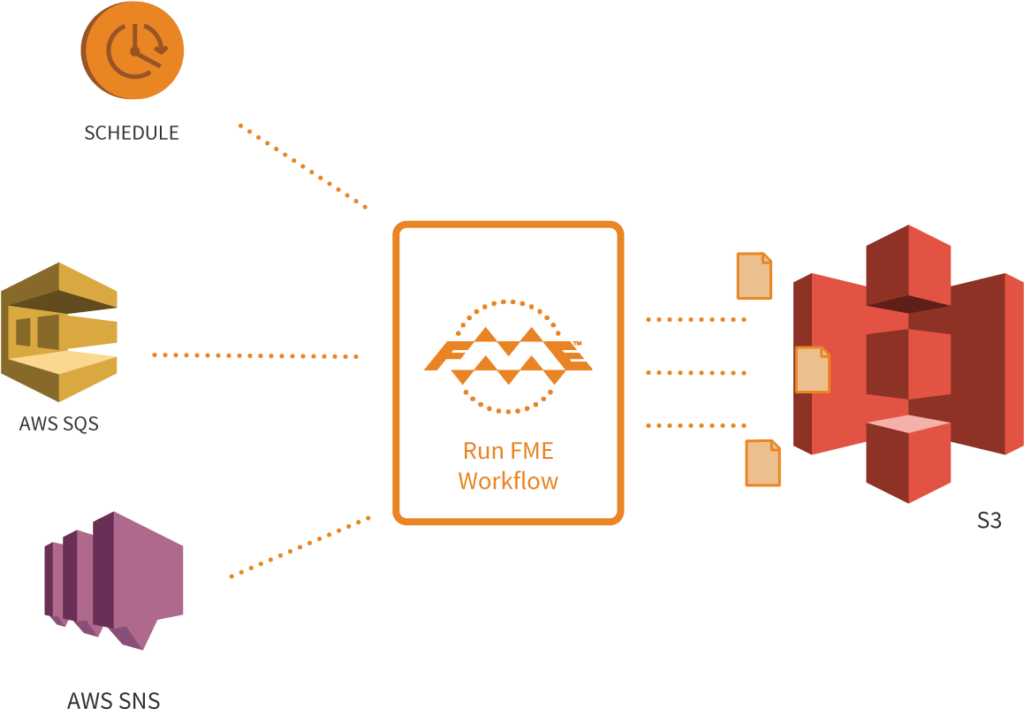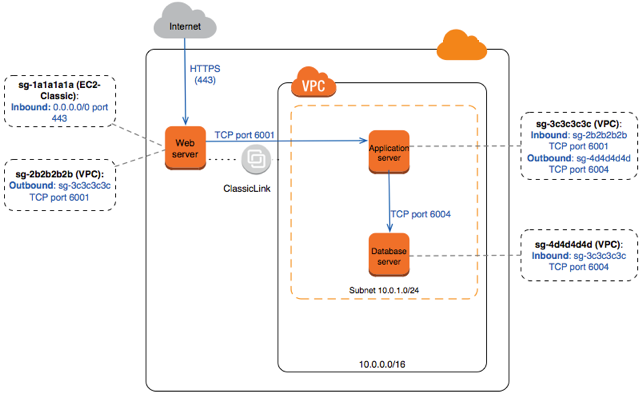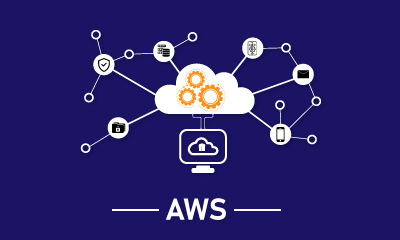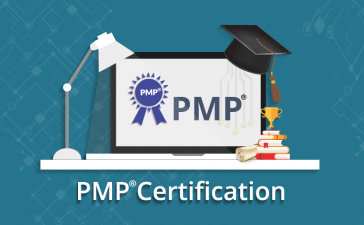Amazon Web Services, AWS is a market leader in delivering cloud-based services for organizations across the globe. Today, adopting AWS has come to be one of the key strategic initiatives for firms globally to continue to be competitive. There is a huge demand for AWS-certified authorities globally. AWS certification training is crafted through a series of levels that will help individuals to achieve a comprehensive perception of AWS abilities with an interactive instructor-led course. AWS certification is obtained by IT professionals after passing one or more levels that help in becoming a Solutions Architect, Developer, Cloud Practitioner, DevOps engineer, Data analytics, Alexa Skill builder, and Operations. Even if one is new in this domain or has prior experience, by getting an AWS certification, one can build up an exceptional career in AWS.
Why AWS is a good career choice?

One of the biggest reasons why AWS certifications and AWS career options are worth is because IT experts need cloud computing and thus are driven towards this cutting-edge technology. Once an individual acquires expertise in AWS services, they are different from the crowd in the competitive job sector.
Having said that, AWS has seen and would continue to see an exponential growth in the recent years. Therefore, AWS career options are highly regarded and searched for by the businesses and the individuals as well.
Slowly, SMEs and other vertical industries are migrating towards cloud and along with bringing many challenges. To handle these challenges, a skilled professional who can customize the solution is always looked for. As an asset to the company, an AWS certified can expect a good salary.
AWS Course Online

AWS currently has about 11 certification courses which are broadly classified into core and speciality respectively. There are various courses available online and offline. Institutes like Henry Harvin, Udemy, Intellipaat, IgmGuru, Edureka, Coursera, and Linkedln Learnings provide online AWS certification courses.
Henry Harvin Cloud Computing Academy
Out of this Henry Harvin Cloud Computing Academy has been structured with an objective to upskill and upgrade individuals with cloud computing technology.
Henry Harvin aims to generate 50,000+ jobs by 2030.
Henry Harvin is affiliated with MSME, Ministry of Corporate Affairs, American Association of EFL, UKAF, UKCert., Project Management Institute, and ISO 29990:2010 certified. Henry Harvin Cloud Computing Academy provides courses on Microsoft Azure fundamentals, AWS Solutions Architect, AWS Developer Associate, AWS SysOps Associate Course, and AWS Technical Essentials.
AWS Solutions Architect Training Course by Henry Harvin is ranked #1 of the top certification programs. It’s a 9-in-1 comprehensive program that includes training, projects, internships, certifications, e-learning, boot camps, hackathons, gold membership, and placement. The curriculum of this course is curated to make an individual industry-ready, and eligible for a good salary package. By learning how to use 30+ Cloud computing tools, trainers get a hands-on experience on different aspects of AWS.
Apart from acquiring knowledge on IAM best practices, individuals also get details about existing applications to AWS. The curriculum is all-inclusive of SAA-C02 and SAA-C01. The modules that are covered under the course are AWS overview, Designing highly available systems, Identity access management (IAM), Amazon virtual private cloud (VPC), Elastic compute cloud (EC2), Amazon simple storage service (S3), Amazon route 53, Databases, Application, Security, Disaster Recovery, and Troubleshooting.
With faculty of more than 15+years of experience, Henry Harvin AWS course helps one to stand out from the crowd. One can also think about expanding their AWS career by supporting a start-up or building a start-up in one of the top rewarding fields of current times.
For your AWS career to get a good start, you need to ace the interview phase. To help you with this here are some most asked questions during an interview. This article of top 90 AWS interview questions and answers is definitely going to help you with answering the questions related to AWS and services, like a pro!
Top 90 AWS Interview Questions and Answers
Q1) Elaborate on what is AWS?
Ans: AWS stands for Amazon Web Services. The robust and emerging cloud computing of Amazon provides a mix of IaaS, PaaS, and SaaS.

Q2) How important is a buffer in AWS?
Ans: A buffer plays a significant role as it synchronizes with optimally distributed elements and bursts and diverts the load and traffic. It in total helps in a fast-paced service.
Q3) Can you tell the types of Cloud services?
Ans: Computing, storage, and networking are the three core types of cloud services.

Q4) Can you elaborate more on Auto-scaling?
Ans: Auto-scaling provides a base to launch new instances s and when demand surges.
Q5) What is S3?
Ans: S3 is basically used for storage and retrieval mechanism at any given point of time.
Q6) How do Instance and AMI are interrelated?
Ans: From one AMI, you can initiate multiple instances. Every single instance has a memory and computing ability. Once an instance is initiated it works as a host with whom we can converse.
Q7) How can one deny DDoS attacks?
Ans: DDoS attack or Distributed denial of Service attack can easily be diverted and denied access by using tools like AWS shield, Amazon Route53, AWS WAF, CloudFront, ELB, and VPC.
Q8) What are the elements of AMI?
Ans: A root volume template, launch permissions, and a block mapping tool are the key elements of AMI.
Q9) How does EMR function?
Ans: EMR allows you to interpret data structure functions as it is a cluster stage. Analytical and marketing data can be prepared using EMR and its structured designs.

Q10) What are the various cloud services?
Ans: SaaS, DaaS, PaaS, and IaaS.

Q11) How do key pairs help in AWS services?
Ans: A combined encryption of private and public key as a pair allows a safe approach to the instance. The public key encrypts and private key decrypts the data and that’s how they work as a pair.
Q12) Name few DB engines?
Ans: In AWS RDS, the DB engines that can be used are MS-SQL DB, MariaDB, MYSQL DB, OracleDB, PostgreDB.
Q13) How many pricing models are there for EC2 instances?
Ans: In total there are 5 of them. On-demand, reserved spot, scheduled and dedicated.
Q14) Elaborate CloudWatch?
Ans: Cloudwatch is used to monitor AWS. Basic monitoring is free whereas the detailed monitoring is accountable.
Q15) Can you name the routing policies of S3?
Ans: Simple routing, latency routing, failover routing, geolocation routing, weighted routing, multivalue answer.
Q16) Tell us how would you create encrypted EBS?
Ans: In the volume creation section, we need to choose to encrypt this volume. A new master key will be then newly created.
Q17) What is the role of Data warehousing in AWS?
Ans: It is a central data repository. It is usually updated several times or in batches.

Q18) What are the connection errors while connecting instances?
Ans: Connection time out, host key not found, user key unrecognized, refusal from the server, unprotected key, error using safari browser are a few of the connection errors.
Q19) What is the difference between OpenStack and AWS?
Ans: OpenStack is designed to scale up hardware system whereas AWS helps to process the data based on the big database.
Q20) Can you upgrade or change the system with near-zero downtime?
Ans: Yes, it is possible to do. Open EC2 console, choose AMI, launch an instance, install the updates, install required applications, test it, once deployed you can easily change the system.
Q21) Apart from console is there any other tool?
Ans: The tools that can help for logging into AWS resources are AWS Linux, AWS Windows, AWS CMD, Putty, AWS SDK, and Eclipse.
Q22) What is the use of Amazon Kinesis Firehose?
Ans: This helps in moving data from S3 to Elastic search.
Q23) What are CloudTrail and Config?
Ans: AWS cloudtrail allows you to do security analysis, change tracking, and auditing compliance. It is one of the logging options of AWS services.
AWS Config helps you to understand the configurational changes that happen in the surrounding. It also provides history of various AWS resources.
Q24) How can you fix a situation where you do not see the service where you are trying to place it?
Ans: If the specific region is not visible then possibility is that the Amazon AWS service is not yet published in the specific region. In that case, one can switch to the nearest available region that provides the AWS services.
Q25) Explain the virtualizations in AWS services?
Ans: There are three main types of virtualizations in AWS services. They are:
- HVM- Hardware Virtual Machine is a complete virtual hardware that executes a master boot record of your image in the root block device.
- PV- Paravirtualization loads the specific kernel in the main menu and is the bootloader.
- PV on HVM- this helps OS to take help of storage and network available.
Q26) How different are NAT Gateways and Instances?
Ans: They both cater the similar functions but differ in availability, bandwidth, performance, maintenance, cost, size and load, and security groups.
Q27) Can you differentiate between termination and stopping of EC2?
Ans: When you terminate it is shifted to stop state, whereas when you stop it does the basic shutdown.
Q28) Are Solarix and AIX available with AWS?
Ans: Both Solarix and AIX have their limitations. They both are though operating systems but are currently not available with AWS.
Q29) Can you align CloudWatch to recover an EC2?
Ans: Yes, I can. By creating an alarm using CloudWatch. In the alarm -> Action Tab-> Recover the Instance.
Q30) Name the AMI designs?
Ans: Fully Baked AMI, JeOS AMI, and Hybrid AMI.
Q31) How to recover an EC2 if the key is lost?
Ans: Following s the stepwise process to recover the EC2 instance:
- Verifying whether the EC2 Config is running
- Detaching the root volume
- Attaching the root volume to a temporary EC2
- Modifying the configuration
- Restarting the original EC2 instance

Q32) How can you fix the issue where VPC is not resolving the server?
Ans: For fixing this problem, enable DNS hostname resolution so that the issue gets resolved automatically.
Q33) How can you connect multiple sites to VPC?
Ans: By providing secure communication between the sites through AWS Cloudhub.
Q34) What are the features of VPC?
Ans: Security groups, network access control lists, and flow logs are some of the features available in VPC.
Q35) What are the important factors that should be kept in mind while migrating to AWS services?
Ans: Operational costs, cost avoidance, business agility, operational resilience, workforce productivity are the main factors to be considered during migration to AWS.
Q36) How to add existing instance to a new Auto Scaling group?
Ans: By following the below steps:
- Open EC2
- Select Instance
- Choose -> Instance settings-> Attach to auto scaling group-> Select a new Auto Scaling
- Attach this to Instance
- Edit the Instance
- Now add it to a new Auto Scaling group
Q37) What are RTO and RPO?
Ans: Recovery Time Objective or RTO is the time a business will wait for a recovery to finish. Recovery Point Objective or RPO is the data loss your business will accept in a time frame.
Q38) Which is the preferred choice to transfer a huge amount of data in a specified region?
Ans: AWS Snowball, as it allows high movement of data in big volumes around a specific AWS region.
Q39) What are SNS and SQS?
Ans: Amazon Simple Notification Service (SNS) is a kind of web service that manages notifications sent to users from any given cloud platform. Manage and send messages or notifications to users and customers from any cloud platform.
Amazon Simple Queue Service (SQS) manages the queue service wherein one can move the data whether it’s in running or active state.

Q40) Cite some benefits of Elastic Beanstalk?
Ans: It’s simple, easy to manage. Beanstalk does the scaling up on its own. Enhances the developer productivity. It is very cost-effective. Beanstalk can be customized as per customers’ configurations.
Q41) What all are counted in template of AWS CloudFormation?
Ans: Following are the five elements that are considered a part of AWS CloudFormation:
- Output values
- Resources
- File Format Version
- Template parameters
- Data tables
Q42) What is security group?
Ans: Security group is like a firewall that can be associated with one or more groups when a user launches them. The user can alter the rules of a security group as and when required and that will be automatically applied to instances which is associated with the specific security group.
Q43) What is the procedure for accessing the internet without public IP addresses?
Ans: One of the ways is where instances without IP address can direct their traffic via NAT getaway. These instances then use public IP addresses. The other way is the instances can direct the traffic through private getaway that is virtual to the existing data center. In return, the internet becomes accessible through newly tweaked security and devices.
Q44) How can you modify the tables of private cloud?
Ans: We can modify the route table by allowing specification about subnets routing towards VPC, getaway, or any specific instance. This way the virtual private cloud can be modified where users get access to make route rules.
Q45) What is classic link and how can you use it?
Ans: The cloud classic link permits EC2 instances with the help of private IP address. For using classic link user should enable at least one private cloud on to associate a security group in the user account. This process helps to connect EC2 instance of user is linked to VPC.

Q46) If the resource cannot be formed in the stack, then what happens?
Ans: In that case, the CloudFormation will automatically roll back and would end the resources that were formed in the CloudFormation template.
Q47) Mention some automation gears?
Ans: Automation gears help to spin up services. API tools are used for written scripts which can be coded in the preferred language of the user. For a structured explanation, Scalar is used as a tool in spinning up services.
Q48) When a cost is incurred while using Elastic IP address?
Ans: When more than 1 Elastic IP is being used, When IP is tagged with a stopped instance, and when IP is not at all attached to any instance.
Q49) What are the two states of process state control?
Ans: C state and P state. C state varies from c0-c6. P state ranges p0-p15. The cores in the processors need thermal headroom and thus the temperature should be kept in an optimum state. These states can customize the processor as per the workload.
Q50) State the different network performance parameters?
Ans: 10Gbps, 20Gbps, and 5Gbps are the network performance parameters used when user launches instances.
Q51) What does a Hadoop cluster follow?
Ans: It follows the master-slave concept. The data is processed, then the slave machines store it and function as nodes. A high-capacity hard disk is recommended with a higher RAM and a more apt CPU.

Q52) What are the advantages of cloud computing?
Ans: Pay as you go, easy to manage, no CAPEX, increased mobility, environment-friendly, dynamic scaling, resources, and high availability.
Q53) Can AWS lambda handle failure during event processing? How?
Ans: Yes, it can. AWS Lambda has a property where we can run asynchronous and synchronous functions. If lambda fails, then it will state an exception and retry for it a minimum of 3 times. If AWS lambda is functioning in the presence of a response generated by Amazon DynamoDB or Kinesis, then it will maintain the data for a time of 24 hrs.
Q54) How different are EBS and Instance store?
Ans: Instance store is a temporary storage place and is physically attached to any host machine. EBS is a completely permanent storage where data can be restored at any later point. Therefore, data in EBS remains whereas in instance store once the data is lost it stops.
Q55) How will you take backup of EFS?
Ans: By following these steps you can take the backup:
- Sign into AWS console
- Click-> EFS-EFS restore
- Select region in the console navigation
- Verify the selected template
- Give a name to the track
- Review and modify the parameters if required

Q56) How to delete old snapshots?
Ans: You can choose the auto-delete option by following these steps:
- Take snapshots of EBS on Amazon S3.
- By using AWS Ops Automator, handle the snapshots
- Create, copy, and delete the snapshots
Q57) Name the load balancers of AWS?
Ans: Application Load Balancer, Classic load Balancer, and network Load Balancer.
Q58) What is Glacier?
Ans: Glacier is the backup tool for taking backup of S3 data.
Q59) What do you understand by amazon lightsail?
Ans: Lightsail is the simplest way to maintain a private and virtual server with AWS. Lightsail includes everything from SSD storage, DNS management, data transfer, and static IP.
Q60)How many S3 buckets you can make, at the maximum capacity?
Ans: 100
Q61) What do you know about consistency model?
Ans: DynamoDB has two consistency models. Eventual Consistency Model maximizes the reading. High consistency Model follows a slight delay in writing a data but ensures that the data is upgraded every single time.
Q62) What is the use of AWS WAF?
Ans: AWS WAF or the Web Application firewall helps to manage the traffic flow to all applications and protects them from exploitations. AWS WAF also makes custom rules and can be further used to allow requests, prevent requests and count them for any new policy.

Q63) What is the aim of AWS IAM?
Ans: AWS IAM aims to manage and also create IAM users, IAM groups, their security credentials, and policies that allow access to AWS services.
Q64) For a user’s passwords, what policies can be set?
Ans: A minimum and maximum length of password can be set. Specifically mentioning about characters or numbers that include uppercase and lowercase, numeric, and non-alphanumeric characters. Also, automatic expiration of password can be set. Access to the account administrator can be provided in case of password expire.
Q65) What is the role of AWS IAM in a business?
Ans: IAM helps provides safe access to multiple users. For federal users, AWS IAM manages access to AWS resources.
Q66) What does Latency Based routing do?
Ans: It utilizes latency parameters among AWS data centers and networks. When a customer receives the lowest of latency, this routing is used.
Q67) Differentiate between a hosted zone and a domain?
Ans: A domain is a conglomeration of data with a self-contained technical unit or administration. A hosted zone is like a vessel that has all the information on how to route traffic for a specific domain.
Q68) What is the role of Amazon Route 53?
Ans: Amazon Route 53 gives a high availability and a low level of latency. This helps users who create a query and get in contact with the DNS server. With the help of critical applications available, route 53 caters to an extremely high level of dependability. Route 53 uses a global network system to answer queries from anywhere.

Q69) How does AWS Config aggregate data?
Ans: From various accounts to a single S3 bucket, you can set up AWS Config and as a result, an appropriate IAM policy is applied to the S3.
Q70) What are on-demand instances?
Ans: On-demand instances are similar to reserved instances, but the only difference is on-demand instances are billed on an hourly basis.
Q71) How do you see a maintenance window?
Ans: Maintenance window in RDS helps you in deciding upgrades of versions, patching of software, and some instant modifications also. This has a very minimal impact on the performance of the DB instance.
Q72) Which functionality does DynamoDB has?
Ans: DynamoDB has GET or PUT operation under a user-defined key. This supports querying with vital attributes in the presence of indexes.
Q73) How will you design a single-digit milliseconds Latency?
Ans: By using Amazon DynamoDB.
Q74) Which service helps you in adding sign-up, and access control for any web or mobile applications?
Ans: Amazon Cognito.
Q75) What does AWS Certificate manager do?
Ans: AWS Certificate Manager allows to supervise, and send SSL or TLS endorsements. These are used in interchanging all
the arrangements and approvals.
Q76) Which is the most cost-efficient service?
Ans: Amazon Relation Database Service, RDS is the one that automates time-taking complex tasks and is very cost-effective.
Q77) How to host a real-time audio and video conference?
Ans: By using Amazon Chime services.
Q78) How will you design similar jobs at the same time in AWS services?
Ans: Through AWS Batch.
Q79) What is the use of Mechanical Turk?
Ans: AWS Mechanical Turk access human consultants and researchers on a temporary or a contractual basis.
Q80) Why AWS as a career?
Ans: In the modern trending market, AWS is one of the highly paid jobs and has high credibility.
Q81) Any idea about how much is the current market share of AWS?
Ans: Approximately 47%+.
Q82) What is Custom metric?
Ans: These are user-centric monitoring metrics in the CloudWatch running on an EC2.
Q83) What is the main role of Shared Responsibility Model of AWS?
Ans: It guards the cloud security.
Q84) Elaborate EIP?
Ans: Ethereum Improvement Proposal or EIP can help in adding code to the repository.
Q85) For every single account in AWS, how many IP addresses are allowed?
Ans: Between 16-26 netmask.
Q86) What is geo-targeting?
Ans: Based on the geographical area, Geo-targeting shows customized content without changing the URL.
Q87) Are there any bandwidth limitations for internet getaways?
Ans: No, there isn’t any as it is vast and redundant.
Q88) What’s the range of IP of VPC?
Ans: 172.31.0.0/16.
Q89) Explain AWS Glue Crawler?
Ans: It’s a program that connects data through a series of classifiers and also scans various data stores for any statistical analysis.

Q90) What is Trigger in Glue?
Ans: Trigger can be defined on the basis of the date and time of an event. A trigger is an ETL job.
Conclusion
AWS is the most significant player in the market. The above set of questions has been carefully structured keeping in mind the latest in AWS. By going through these interview questions and answers, you can easily crack the AWS interview.
Image Courtesy: aws.amazon.com
Frequently Asked Questions
After its launch in 2006, Amazon Web Services or AWS gives APIs and cloud-computing platforms to organizations, individuals, and government as well. AWS career choice will offer 175+ fully-featured services-related job profiles. Therefore, AWS is the best career choice.
From Cloud architect, developer, software engineer, and data analytics there are multiple scopes of AWS.
Yes. With improved skills, higher credibility, and latest knowledge about AWS, a career in the same bridge the gap between demand and supply, that still exists.
Henry Harvin is the best for AWS-related courses as its ranked #1 and supports placement under the guidance of industry experts.
AWS has the most diverse and extensive global cloud infrastructure that is geographically connected between more than 25 regions around the world.
With a surging demand for AWS knowledgeable candidates, a fresher with AWS course certification or a small-term project experience can certainly consider AWS as a career choice
Both are technology-driven and depend clearly on the career path you wish to walk into. AWS provides you with infrastructure, software, and Platform as a service. Salesforce is a CRM that provides software and platform as a service.
As an IT person, you must be already knowing about the AWS domain in general. By choosing an offline or online mode of certification course in AWS and experience you can add up to your skills. This will help you to change the track of your profile in the future.
There are no such prerequisites to start an AWS career. Start your certification process with basic concepts and then the specializations.
As a fresher, along with AWS certification, the basics of Linux, Python, Shell, and Windows OS will give you an extra edge.










Impressive detailing!!!
The kind of research and the time that you spend on writing each of these posts shows your metal. Keep shining!!
Thank you so much Shivali for your word of encouragement.
Great post, Sushma!. Informative one.
Thank you Daisy
I wanted to thank you for this good read!! I definitely enjoyed every little bit of it.
I have got you book marked to look at new stuff youu post…
Here is my web page; calendário de novembro